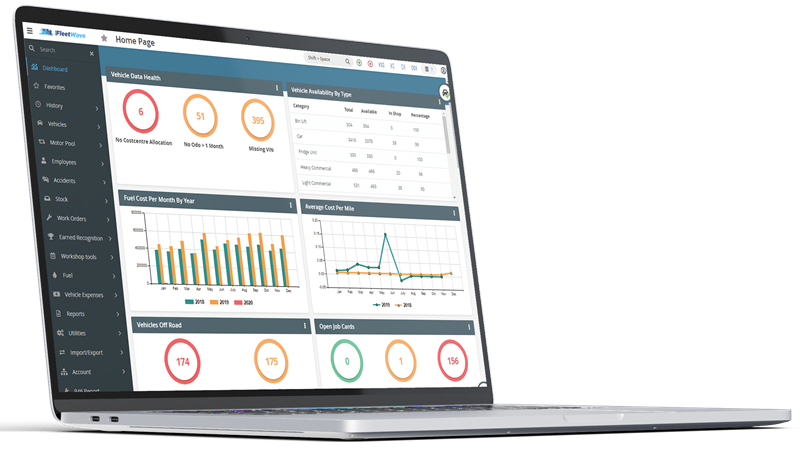For many companies, 2020 was a year of uncertainty and change, with new processes introduced and short-term policies deployed as they came to terms with the socio-economic crisis caused by coronavirus.
For Chevin, the pandemic coincided with a year of transformation – as well as its 30th anniversary. The fleet software provider had already sown the seeds for a new approach to business back in September 2019, at the start of its financial year, months before Covid, furloughing and lockdown became part of the everyday language.
Far from having its plans disrupted, Chevin was able to quickly adapt to new conditions – it already had a culture of working remotely in many of its global operations, while its platforms and software development have been cloud-based for the past five years – allowing it to continue executing its short-term strategy.
Reorganise the business
Managing director Ashley Sowerby (above) explains: “We felt we needed to reorganise the business. That meant we would stop knocking on doors trying to sell at full speed and take our foot off the gas a little bit so we could reinvest in the product. So, there was no increase in sales targets year-on-year. Then, six months in, coronavirus hit.”
Immediately, it resulted in a slowdown in project outputs and billing, as clients weren’t available to sign off work. But that lasted just six to eight weeks, before remote working became ‘the new normal’.
Essential services customers, including delivery/logistics, utilities and local authority amenities, were largely unaffected; the main impact was among car-based customers where mileage evaporated. The big question remains as to whether it will ever return.
“One of the biggest challenges will be to persuade a finance director that post-pandemic, a business trip is essential because we have just demonstrated for the best part of a year that it isn’t essential,” Sowerby says.
“That’s where I see the pressure coming from – asking, ‘Do you need the vehicles?’”
Does he predict the size of the UK car fleet will shrink? “Yes, I think it will need to, or perhaps consolidate into car allowances, pool vehicles or on-demand fleets, so there is transport when you need it,” Sowerby says. “This could be the tipping point for mobility as a service. There are platforms out there now that tell you how to get from A to B. The next development is the purchase of transit on demand.”
Thanks to either strategic nous or a stroke of luck – perhaps a dollop of both – Chevin’s new product structure and payment plan sit comfortably within a business landscape where simplicity and subscriptions outweigh complexity and upfront purchases.
 FleetWave Core had already been reinvented as an out-of-box, ready-to-run system where a multitude of options were rationalised within an optimised ‘best of’ core product, making it easier to deploy and improving the customer experience.
FleetWave Core had already been reinvented as an out-of-box, ready-to-run system where a multitude of options were rationalised within an optimised ‘best of’ core product, making it easier to deploy and improving the customer experience.
Now the focus has shifted to making it user-friendly to the point of being self-service, benchmarking the same level of intuition offered by the likes of Facebook.
“As a business, I don’t want us to sell training days or professional services; we sell software,” says Sowerby. “So increasingly, our training will be on-demand videos that are embedded within the application.”
The way companies pay for FleetWave is also being transformed, moving away from perpetual licences, upfront pricing and annual support fees towards monthly fees on a software-as-a-service deal. Chevin hosts the software; the customer rents it.
“We get less revenue initially, but it will be a more regular and guaranteed revenue stream,” Sowerby says.
Switching FleetWave Core from a “heavy-lift delivery” (Sowerby’s words) to a monthly fee-based, less complex product also opens up the SME market.
Client base
Chevin has close to 100 clients in the UK, with large fleets (those with 200-plus vehicles) accounting for 85%. With a target of doubling revenue by August 2021 against 2018 figures, the huge volume of smaller fleets will be a major factor.
“In the past, FleetWave didn’t make economic sense for a small fleet – they could buy cheaper, smaller products,” he says. “But with FleetWave Core, we can focus on any size of fleet – it’s cost-effective for the client as well as for Chevin. We see this market being a significant driver of growth going forward.”
Historically, new contracts were signed with companies moving from spreadsheets to their first fleet management software system. While that is expected to remain the case for the smaller companies, larger clients are increasingly conquest business, driven by tender or a change in fleet personnel.
“Changing fleet management software is easier now it’s cloud-based,” explains Sowerby. “The biggest issue is extracting the data from one database and putting it into ours, but we have processes to do that.
“What makes a system ‘stickier’ is what people want to do with it beyond fleet, such as HR or finance – that’s a growing part of our customer base.”
FleetWave Core integrates emergency programme management, payment cards, telematics, employment data, expenses, workshop, asset management, risk and compliance services and back-office admin within its ecosystem – companies do not need to operate separate platforms. Therefore, the decision to extract oneself from a system which has tentacles in multiple parts of the business becomes much more momentous.
One of Chevin’s most significant recent developments is the creation of FleetWave Store, a self-service ‘app store’ dashboard that enables fleets to click on new services they like the look of for instant updates. It changes the data process from being a Chevin task to a client task, which is supported by Chevin.
Apps include workshop, MOT, tax, fuel and electric vehicles – between 50-100 in total. Intriguingly, they aren’t restricted to those designed by Chevin’s own programmers; they could be developed by its fleet customers.
“We host the store, but anyone can put something on the shelf and any customer can take it off. We ensure it is fit for purchase and tweak it if necessary, but it means we have thousands of users contributing to this ecosystem,” Sowerby says.
“We want to be a market-led product rather than a product-led market (one of the reasons why Sowerby brought in ex-BT Fleet head of transformation Will Wycks as senior vice-president, marketing and product).”
Benefits of client control
Ultimately, Chevin is banking on the benefits of client control and simplification to boost its sales story with potential and existing clients.
Nowhere is this more striking than in the work being done to minimise project lead times. Enterprise sales often take 14 months; Chevin has a goal of reducing this to just two weeks.
Switching to the monthly fee, rather than large upfront cost, should help to speed up the decision, while standardised contracts and quicker product delivery will shave weeks off the process.
“Now it’s almost ‘there’s your CD, go and install it and let us know if you have any questions!’,” Sowerby says.
“We have eliminated the delays that come from when you ask the customer what they want the product to do – often they don’t know – by changing it around so we now show them what we have.”
He adds: “We are also seeing changes in the customer base, away from fleet managers that want to be hands-on with the data toward fleet directors, finance directors or CFOs who want to implement best practice and focus on the strategy.”























Login to comment
Comments
No comments have been made yet.